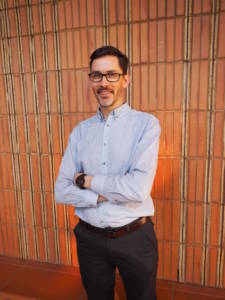Sun exposure damages our skin cells DNA – the story of when repair mechanisms breakdown
Researchers from The University of Queensland have conducted the most comprehensive study looking at the genomics of skin and naevi (moles) with the goal improving the early detection of melanoma.
Overall, studies have shown that around 30% of melanomas arise within pre-existing naevi, which leaves 70% of melanomas developing on the normal skin.

Dr Mitchell Stark
UQ Diamantina Institute’s Dr Mitchell Stark is the lead author of the study investigating the underlying genetic mechanisms behind why melanomas develop from some naevi, and not others.
“Moles come in many different shapes and size and some can change into a melanoma but often do not,” Dr Stark said.
“Melanoma can also form without even seeing a mole and trying to detect these changes is challenging but essential if we are to prevent melanoma formation.”
For a long time scientists have been studying the effects of sun exposure on our skin cells and it is well known that sun exposure can lead to skin cancer formation including melanoma.
“Luckily, the cells in our body have in-built sensors that detect when our DNA is damaged but sometimes these sensors do not work so well leading to damage in our DNA which may lead to cancer. In most cases, however, melanoma is not the first step and instead a mole develops.”
Scientists from UQ’s Dermatology Research Centre analysed samples from participants in the Brisbane Naevus Morphology Study, and discovered that in all of the samples, moles had a lot of changes in their DNA (mutations) that were commonly seen in melanomas. The moles studied did however lack the necessary steps required for melanoma development.
“The moles sampled either were missing these necessary steps or the mole had other changes that ‘protected’ it from becoming a melanoma.”
Studies have consistently shown the number of naevi a person has is the strongest predictor of risk for melanoma. “In Australia, we have the world’s best melanoma prevention and surveillance programs leading to an increase in early detection of melanoma,”
“Moles are ‘simulators’ of melanoma and often they look just like an early melanoma and therefore they may be removed as a preventive measure.”
Dr Stark reinforced that people with a high number of moles, and other risk characteristics such as fair skin or light coloured hair or eyes, should continue to see their treating Dermatologist or skin cancer doctor for routine skin examination.
Dr Stark is a National Health and Medical Research Council (NHMRC) Early Career Fellow.
The UQ Dermatology Research Centre is leading the Centre of Research Excellence for the Study of Naevi, and is based at the Translational Research Institute (TRI).
The research is published in the Journal of Investigative Dermatology (JID).
Media: Dr Mitchell Stark, m.stark@uq.edu.au




